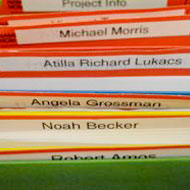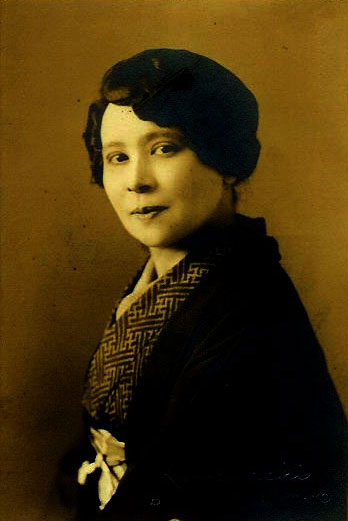
The Williams Oral History Project is dedicated to the collection and preservation of histories about the artists and artwork in the Michael Williams Art Collection at the University of Victoria. This resource is designed to help facilitate research about the Williams Art Collection for the friends of Michael Williams, and for present and future generations of students and scholars. In addition, this ongoing project provides graduate and undergraduate students with opportunities to gain experience creating oral histories. If you have questions about this project, please contact me at cbpalmer@uvic.ca.
Visit the Pacific North West Artists Database online at http://pnwartists.ca/

Elizabeth Yeend Duer (1889-1951) is an Anglo-Japanese painter. She was born in the foreign settlement of Nagasaki. Her mother was born into the Zama family, then adopted as Yasu Tsunekawa (1859-1936). She may have worked in England as a nanny in young adulthood before her marriage in Shanghai, in 1885, to Elizabeth’s father, Yeend Duer (1846-1921), an Englishman who had arrived in Nagasaki in the 1860s. The Duers were one of the earliest culturally mixed families in Japan.
The Duer family moved to Tokyo in 1904, after which Elizabeth began studying painting with Gyokushi Atomi 跡見 玉枝, (1859-1943), who ran a private art school for girls and women. Gyokushi Atomi was a master painter of the cherry tree, and after working with her for a number of years, Duer took on the artistic identity of Gyokushō 玉蕉. In Japan, Duer— Gyokushō painted numerous shikishi panels of flowers and landscapes. Some of these were completed alongside her good friend Aiko Yamaguchi—Gyokushi 玉絲, who had also studied with Gyokushi Atomi. At times, the two friends collaborated on projects together. Duer left Japan in 1940 as tensions between Japan and England began to escalate. She came to Victoria, British Columbia to be near her first cousin and artist Katharine Maltwood (née Sapsworth) and her husband John.
Just over a year later, in December 1941, Pearl Harbour was bombed. Duer was not subject to internment during the war, unlike most Canadian residents of Japanese heritage. Remaining in Victoria, she joined a local group of artists known as The Island, Arts and Crafts Society, which included Katharine Maltwood and Emily Carr. Elizabeth Duer—Gyokushō created more than 100 hundred paintings on shikishi boards that depict the flora and fauna of Vancouver Island, developing a unique transnational style. Duer did not have the opportunity to return to Japan before her in death in 1951. Nearly all of the work that Duer— Gyokushō created while in British Columbia entered into the University of Victoria’s Art Collection (UVAC) as part of Katharine Maltwood’s founding bequest.
The Elizabeth Yeend Duer Project
My program of research, the Elizabeth Yeend Duer Project, investigates the art and biography of this important Pacific Northwest painter, Duer— Gyokushō 玉蕉. My work began with authentication of the works in the UVAC collection credited to Duer. Izumi Watanabe, the curator at Atomi University’s art museum in Tokyo, where many of Gyokushi Atomi’s 跡見 玉枝 teaching portfolios are archived, has been an especially helpful colleague in this work. With her help, I have identified the work of a number of artists among the pieces formally attributed to Duer within the collection. They include her teacher, Gyokushi Atomi 跡見 玉枝, and her friend, Aiko Yamaguchi—Gyokushi 玉絲. Otherworks are created by Gyokuha 玉波, Gyokuon 玉温, Gyokukou 玉蕉, Gyokutei 玉汀, and Koushuu 珖舟. She may also have known the Boston jeweler Miye Matsukata, who trained, though at a much later date, under Gyokushi Atomi 跡見 玉枝.
This project continues with biographical research and analysis. I was able to locate members of Duer’s family and some long-term friends in Japan, and with support from a University of Victoria Faculty of Fine Arts Internal Research Grant, I have travelled to Japan to collect oral histories concerning Duer’s life and education. I am now piecing together an essay-length biography of Elizabeth Duer- Gyokushō, considering changes in her art, as it developed alongside her travels in the shifting political dynamics of Britain, Japan, and Canada.
Images of Duer’s work are available on the UVAC website.